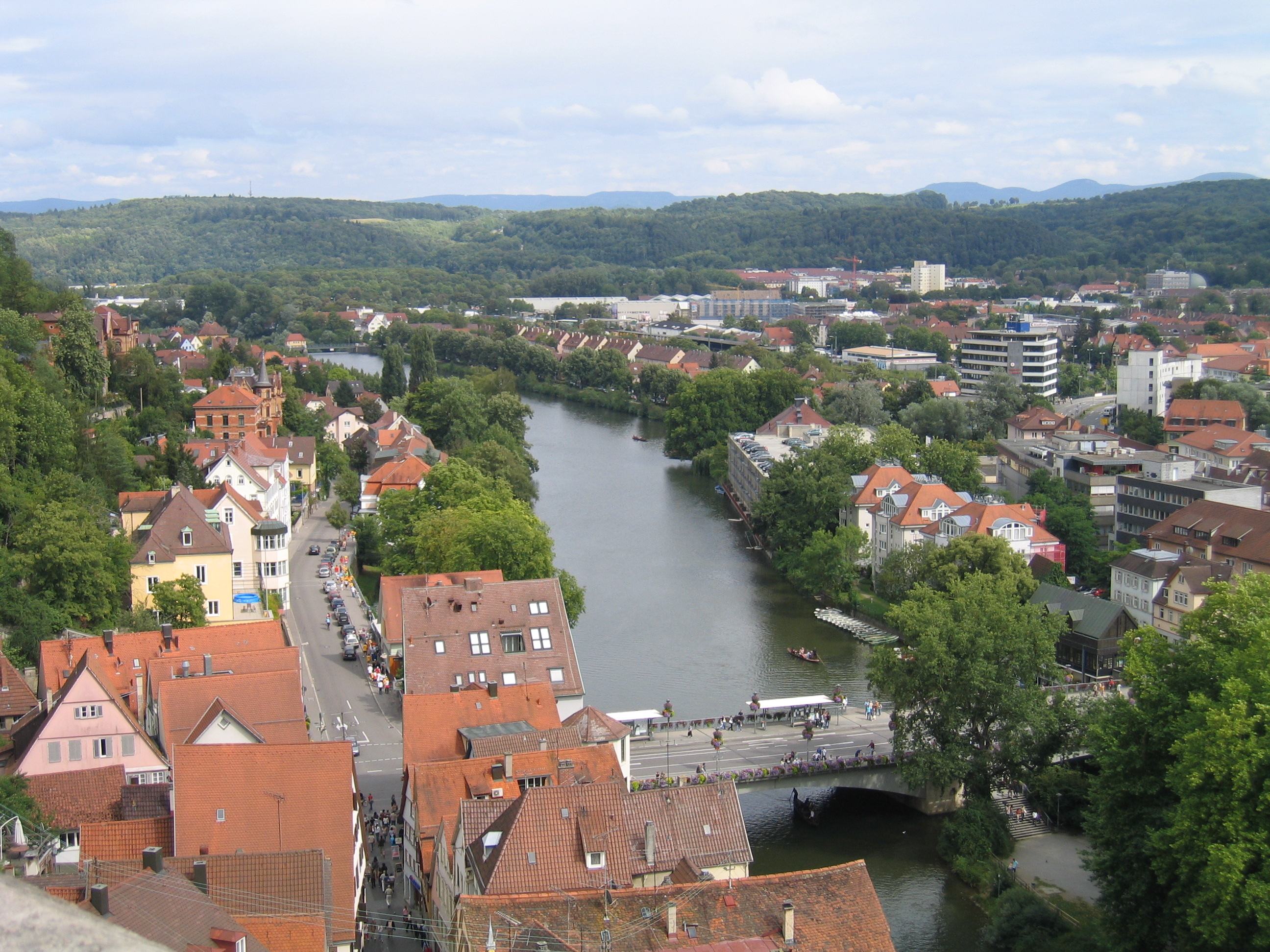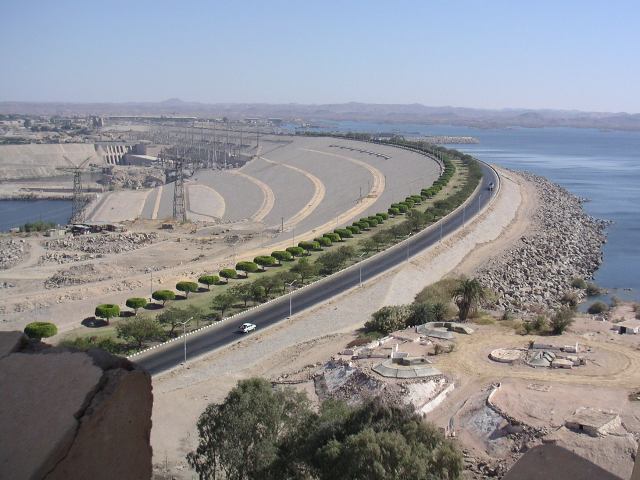|
Kunsthalle Tübingen
Kunsthalle Tübingen is an art museum in the university town of Tübingen, Baden-Württemberg, Germany. It was founded (and the erection of its building financed) in 1971 by Paula Zundel and Dr. Margarethe Fischer-Bosch, daughters of the industrialist Robert Bosch (founder of Robert Bosch GmbH) in memory of painter Georg Friedrich Zundel, Paula Zundel's late husband. The building was erected during the big northern expansion of Tübingen in the 1960s and early 1970s, when the Wanne district (a.o.) was built almost from scratch as a residential area on the town's (formerly) rural northern hills. For the first eleven years of its existence, it hosted mainly exhibitions of modern art and contemporary art. From 1982, it also frequently presented the works of painters of the classical modernity, e.g. Cézanne, Degas, Picasso, Renoir, Toulouse-Lautrec or Henri Rousseau, while keeping up the focus on modern art and contemporary art. The first director of the Kunsthalle and, so far, f ... [...More Info...] [...Related Items...] OR: [Wikipedia] [Google] [Baidu] |
Tübingen
Tübingen (; ) is a traditional college town, university city in central Baden-Württemberg, Germany. It is situated south of the state capital, Stuttgart, and developed on both sides of the Neckar and Ammer (Neckar), Ammer rivers. about one in three of the 90,000 people living in Tübingen is a student. As of the 2018/2019 winter semester, 27,665 students attend the University of Tübingen, Eberhard Karl University of Tübingen. The city has the lowest median age in Germany, in part due to its status as a university city. As of December 31, 2015, the average age of a citizen of Tübingen is 39.1 years. Immediately north of the city lies the Schönbuch, a densely wooded nature park. The Swabian Alb mountains rise about (beeline Tübingen City to Roßberg - 869 m) to the southeast of Tübingen. The Ammer and Steinlach rivers are Tributary, tributaries of the Neckar river, which flows in an easterly direction through the city, just south of the Middle Ages, medieval old town. La ... [...More Info...] [...Related Items...] OR: [Wikipedia] [Google] [Baidu] |
Renoir
Pierre-Auguste Renoir (; ; 25 February 1841 – 3 December 1919) was a French artist who was a leading painter in the development of the Impressionist style. As a celebrator of beauty and especially feminine sensuality, it has been said that "Renoir is the final representative of a tradition which runs directly from Rubens to Watteau." He was the father of actor Pierre Renoir (1885–1952), filmmaker Jean Renoir (1894–1979) and ceramic artist Claude Renoir (1901–1969). He was the grandfather of the filmmaker Claude Renoir (1913–1993), son of Pierre. Life Youth Pierre-Auguste Renoir was born in Limoges, Haute-Vienne, France, in 1841. His father, Léonard Renoir, was a tailor of modest means, so, in 1844, Renoir's family moved to Paris in search of more favorable prospects. The location of their home, in rue d'Argenteuil in central Paris, placed Renoir in proximity to the Louvre. Although the young Renoir had a natural proclivity for drawing, he exhibited a greater ta ... [...More Info...] [...Related Items...] OR: [Wikipedia] [Google] [Baidu] |
1971 Establishments In West Germany
* The year 1971 had three partial solar eclipses (Solar eclipse of February 25, 1971, February 25, Solar eclipse of July 22, 1971, July 22 and Solar eclipse of August 20, 1971, August 20) and two total lunar eclipses (February 1971 lunar eclipse, February 10, and August 1971 lunar eclipse, August 6). The world population increased by 2.1% this year, the highest increase in history. Events January * January 2 – 1971 Ibrox disaster: During a crush, 66 people are killed and over 200 injured in Glasgow, Scotland. * January 5 – The first ever One Day International cricket match is played between Australia and England at the Melbourne Cricket Ground. * January 8 – Tupamaros kidnap Geoffrey Jackson, British ambassador to Uruguay, in Montevideo, keeping him captive until September. * January 9 – Uruguayan president Jorge Pacheco Areco demands emergency powers for 90 days due to kidnappings, and receives them the next day. * January 12 – The landmark United States televis ... [...More Info...] [...Related Items...] OR: [Wikipedia] [Google] [Baidu] |
Art Museums And Galleries Established In 1971
Art is a diverse range of cultural activity centered around ''works'' utilizing creative or imaginative talents, which are expected to evoke a worthwhile experience, generally through an expression of emotional power, conceptual ideas, technical proficiency, or beauty. There is no generally agreed definition of what constitutes ''art'', and its interpretation has varied greatly throughout history and across cultures. In the Western tradition, the three classical branches of visual art are painting, sculpture, and architecture. Theatre, dance, and other performing arts, as well as literature, music, film and other media such as interactive media, are included in a broader definition of "the arts". Until the 17th century, ''art'' referred to any skill or mastery and was not differentiated from crafts or sciences. In modern usage after the 17th century, where aesthetic considerations are paramount, the fine arts are separated and distinguished from acquired skills in general, ... [...More Info...] [...Related Items...] OR: [Wikipedia] [Google] [Baidu] |
Foundation (non-profit)
A foundation (also referred to as a charitable foundation) is a type of nonprofit organization or charitable trust that usually provides funding and support to other charitable organizations through grants, while also potentially participating directly in charitable activities. Foundations encompass public charitable foundations, like community foundations, and private foundations, which are often financial endowment, endowed by an individual or family. Nevertheless, the term "foundation" might also be adopted by organizations not primarily engaged in public grantmaking. Description Legal entities existing under the status of "foundations" have a wide diversity of structures and purposes. Nevertheless, there are some common structural elements. * Legal requirements followed for establishment * Purpose of the foundation * Economic activity * Supervision and management provisions * Accountability and auditing provisions * Provisions for the amendment of the statutes or articles of ... [...More Info...] [...Related Items...] OR: [Wikipedia] [Google] [Baidu] |
Curator
A curator (from , meaning 'to take care') is a manager or overseer. When working with cultural organizations, a curator is typically a "collections curator" or an "exhibitions curator", and has multifaceted tasks dependent on the particular institution and its mission. The term "curator" may designate the head of any given division, not limited to museums. Curator roles include "community curators", "literary curators", " digital curators", and " biocurators". Collections curator A "collections curator", a "museum curator", or a "keeper" of a cultural heritage institution (e.g., gallery, museum, library, or archive) is a content specialist charged with an institution's collections and involved with the interpretation of heritage material including historical artifacts. A collections curator's concern necessarily involves tangible objects of some sort—artwork, collectibles, historic items, or scientific collections. In smaller organizations, a curator may have sole r ... [...More Info...] [...Related Items...] OR: [Wikipedia] [Google] [Baidu] |
Claes Oldenburg
Claes Oldenburg (January 28, 1929 – July 18, 2022) was a Swedish-born American sculptor best known for his public art installations, typically featuring large replicas of everyday objects. Another theme in his work is soft sculpture versions of everyday objects. Many of his works were made in collaboration with his wife, Coosje van Bruggen, who died in 2009; they had been married for 32 years. Oldenburg lived and worked in New York City. Early life and education Claes Oldenburg was born on January 28, 1929, in Stockholm, the son of Gösta Oldenburg and his wife Sigrid Elisabeth née Lindforss. His father was then a Swedish diplomat stationed in New York and in 1936 was appointed consul general of Sweden to Chicago where Oldenburg grew up, attending the Latin School of Chicago. He studied literature and art history at Yale University [...More Info...] [...Related Items...] OR: [Wikipedia] [Google] [Baidu] |
Richard Hamilton (artist)
Richard William Hamilton (24 February 1922 – 13 September 2011) was an English painter and collage artist. His 1955 exhibition ''Man, Machine and Motion'' ( Hatton Gallery, Newcastle upon Tyne) and his 1956 collage '' Just what is it that makes today's homes so different, so appealing?'', produced for the '' This Is Tomorrow'' exhibition of the Independent Group in London, are considered by critics and historians to be among the earliest works of pop art.Livingstone, M., (1990), ''Pop Art: A Continuing History'', New York: Harry N. Abrams, Inc. A major retrospective of his work was at Tate Modern in 2014. Early life Hamilton was born in Pimlico, London on 24 February 1922. Despite having left school with no formal qualifications, he managed to gain employment as an apprentice working at an electrical components firm, where he discovered an ability for draughtsmanship and began to do painting at evening classes at Saint Martin's School of Art and at the Westminster Schoo ... [...More Info...] [...Related Items...] OR: [Wikipedia] [Google] [Baidu] |
George Segal (artist)
George Segal (November 26, 1924 – June 9, 2000) was an American painter and sculptor associated with the pop art movement. He was presented with the United States National Medal of Arts in 1999. Works Although Segal started his art career as a painter, his best known works are cast life-size figures and the tableaux the figures inhabited. In place of traditional casting techniques, Segal pioneered the use of plaster bandages (plaster-impregnated gauze strips designed for making orthopedic casts) as a sculptural medium. In this process, he first wrapped a model with bandages in sections, then removed the hardened forms and put them back together with more plaster to form a hollow shell. These forms were not used as molds; the shell itself became the final sculpture, including the rough texture of the bandages. Initially, Segal kept the sculptures stark white, but a few years later he began painting them, usually in bright monochrome colors. Eventually he started having ... [...More Info...] [...Related Items...] OR: [Wikipedia] [Google] [Baidu] |
20th-century French Art
20th-century French art developed out of the Impressionism and Post-Impressionism that dominated French art at the end of the 19th century. The first half of the 20th century in France saw the even more revolutionary experiments of Cubism, Dada and Surrealism, artistic movements that would have a major impact on western, and eventually world, art. After World War II, while French artists explored such tendencies as Tachism, Fluxus and New realism, France's preeminence in the visual arts progressively became eclipsed by developments elsewhere (the United States in particular). From Impressionism to World War II The early years of the twentieth century were dominated by Neo-Impressionism and Divisionism, experiments in colour and content that Impressionism, Post-Impressionism and Symbolism had unleashed. The products of the far east also brought new influences. Les Nabis explored a decorative art in flat plains with a Japanese print graphic approach. From 1904 Les Fauves exploded ... [...More Info...] [...Related Items...] OR: [Wikipedia] [Google] [Baidu] |
19th-century French Art
19th-century French art was made in France or by French citizens during the following political regimes: Napoleon's Consulate (1799–1804) and Empire (1804–14), the Restoration (1814–30), the July Monarchy (1830–48), the Second Republic (1848–52), the Second Empire (1852–71), and the first decades of the Third Republic (1871–1940). Romanticism emerged in the early 19th century as a vibrant period in the arts, influenced by the French Revolution and Napoleonic wars. It marked a departure from classicism, embracing Orientalism, tragic anti-heroes, wild landscapes, and themes from the Middle Ages and the Renaissance. This era saw a debate between the proponents of line, exemplified by Jean Auguste Dominique Ingres, and those favoring violent colors and curves, like Eugène Delacroix. Romanticism emphasized a literary language rooted in feelings. It laid the groundwork for later movements, including Naturalism and Symbolism, influencing artists like Gustave Courb ... [...More Info...] [...Related Items...] OR: [Wikipedia] [Google] [Baidu] |








